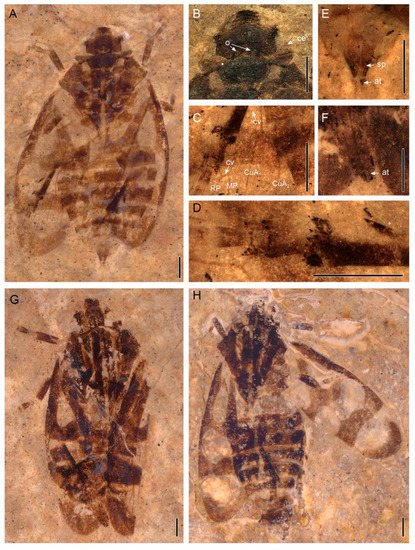The superfamily Cercopoidea is commonly named as “spittlebugs”, as its nymphs excrete a spittle mass to protect themselves and hide from predators and parasites. Cosmoscartini (Cercopoidea: Cercopidae) is a large and brightly colored Old World tropical tribe, including 11 genera. Although spittlebugs are widespread all around the world, their species diversity centers are in the tropics. The oldest confirmed fossil known for the Cercopidae (Allocercopis punctatis Lin, 1997) dates back to the Cretaceous–Paleocene.
During field investigations in the central Tibetan Plateau, researchers from Xishuangbanna Tropical Botanical Garden (XTBG) collected many plant and insect fossils, including spittlebugs. They studied the spittlebugs fossil materials and found them different from known fossils. After comparison with all the extant genera of the tribe Cosmoscartini, the researchers reported a new genus Nangamostethos from the upper Eocene Niubao Formation at Kanggale Hill, Nima Basin, in the central Tibetan Plateau, China.
The fossil is confirmed as new genus because of the following characteristics: head narrower than pronotum, approximately as wide as anterior margin of scutellum; median ocellus absent; compound eyes globose; antennae arising in cavities below anterior margin of head, before the eyes; pronotum hexagonal, wider than long; hind legs with one or two lateral spines and rows of apical spines on the tibiae.
The new genus of spittlebugs was published in Insects.
The new fossil represents one of the few fossil Cercopidae species described from Asia. It is likely that Nangamostethos was extinct from the Tibetan Plateau due to the regional aridification and an overturn of plant taxa in the last 33 million years.
According to the researchers, more phylogenetic investigations and an increase in knowledge and elaboration of fossil materials regarding spittlebugs are needed for a better understanding of the origin and evolution of the tribes and families of the superfamily Cercopoidea.
Contact
SU Tao Ph.D Principal Investigator
Key Laboratory of Tropical Forest Ecology, Xishuangbanna Tropical Botanical Garden, Chinese Academy of Sciences, Mengla, Yunnan 666303, China
E-mail: sutao@xtbg.org.cn

Photographs of the Nangamostethos tibetense gen. et sp. nov.

